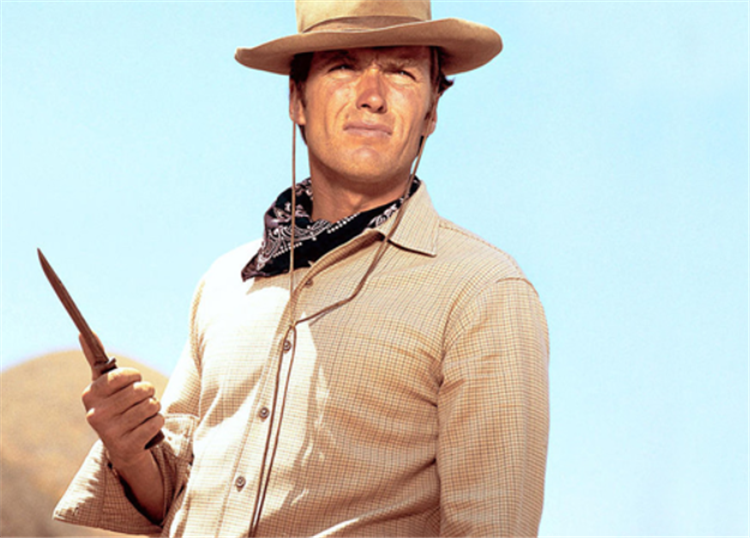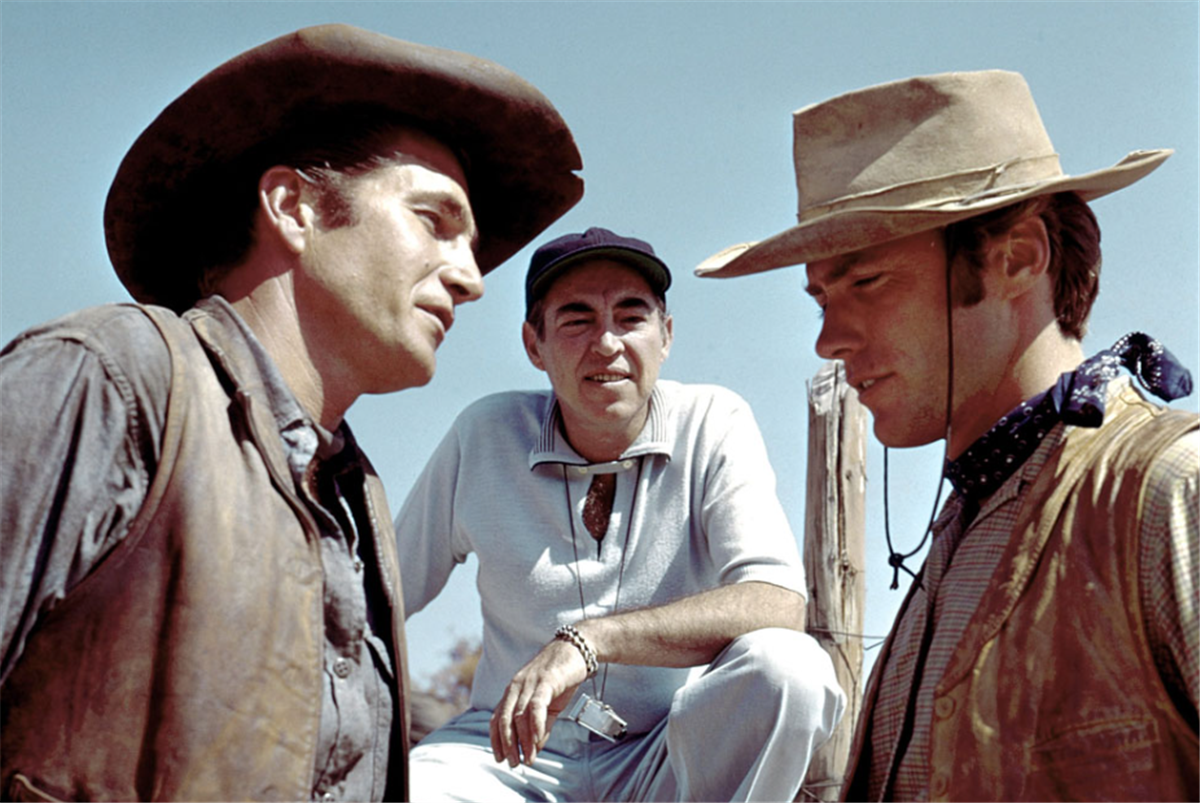“Rawhide” followed the many adventures of cattle ranchers in the Old West. It was a working-class show about the salt-of-the-earth cowboys that formed the American foundation. Keep in mind that “Rawhide” came along before Sergio Leone popularized a particular kind of violent, deconstructionist Western. “Rawhide” was blunt in its earnestness. The series starred Eric Fleming as the cowboy trail boss Gil, as well as a young Clint Eastwood, appearing in one of his earlier acting gigs, as the ramrod Rowdy Yates.
A lot of “Rawhide” was devoted to the mechanics and technicalities of cattle ranching, and the ropin’, throwin’, and brandin’ was filmed in loving detail.
Eastwood also once admitted that he didn’t really know how to do any of those things. On a 2008 episode of NPR’s “Fresh Air,” put out to promote Eastwood’s new film “Changeling,” the famed actor/director said he was grateful for the work in 1959, but had to rely on clever editing to make it look like Rowdy was actually handle cows.
Done by trickery

“Fresh Air” host Terry Gross pointed out that she was a longtime fan of “Rawhide” and was particularly taken by its theme song. Gross was careful to quote the passage above and asked Eastwood if the experience of working on “Rawhide” was as memorable as the theme. Eastwood said that he did have enough roping and riding skills to perform the actions convincingly, but that he wasn’t as skilled as the camera made him look. He was also careful to point out that no actual cattle branding took place on set. Branding scenes were always achieved via cutaway. Eastwood said:
“Well, I did it periodically, most of the time it was done by trickery, and maybe you’d come in and catch a new steer, and it cut to some other thing and come back, and the steer was already branded or something. But it was great fun, that series was a great fun at that time. After I had done about three years of it, I thought maybe, wouldn’t it be nice to go on and do something else, but I just sort of said it in my mind that this was a great experience. I have no regrets. It was great learning ground.”
If Eastwood had been tired of filming “Rawhide,” he didn’t show it. The actor remained a main part of the cast for all eight of its seasons and became a household name. In 1962, Eastwood even appeared on the notorious talking horse sitcom “Mr. Ed” playing a version of himself. “Rawhide” ended in 1965, and Eastwood was already starring in Leone’s “Man With No Name” movies. By 1971, Eastwood has begun directing.
Getting back on the horse

“Rawhide” cemented Eastwood as a Western cowboy, and the “Man with No Name” movies established him as an Old West gunslinger. For many, many years, Eastwood was a mainstay of the Western genre, becoming almost a cliche unto himself. This was an image Eastwood seems to have fought occasionally. In 1992, Eastwood directed “Unforgiven,” a Western about a former gunslinger, disgusted with his past, called out of retirement to murder once again. “Unforgiven” is melancholic and introspective. It is the opposite of the bold, exciting “Rawhide” career of an 1860s cowboy.
After “Unforgiven,” Eastwood wouldn’t ride a horse on camera again until his 2021 film “Cry Macho” when the director was 91 years old. In that film, he played a former rodeo rider who was hired to rescue a young man — and a rooster — from Mexico.
“Rawhide,” after all, had debuted 62 years before. Eastwood admitted that he had lost some of those old skills, relying once again on trickery, but there was a lot he was still able to do himself. He said:
“It might not be as good as I’ve thrown in the past but it was fun to do it […] The wrangler was worried […] She was saying, ‘Be careful, be careful now.’ She was scared I’d end up on my rear end. But if you treat the horse like a buddy, he’ll take care of you.”
